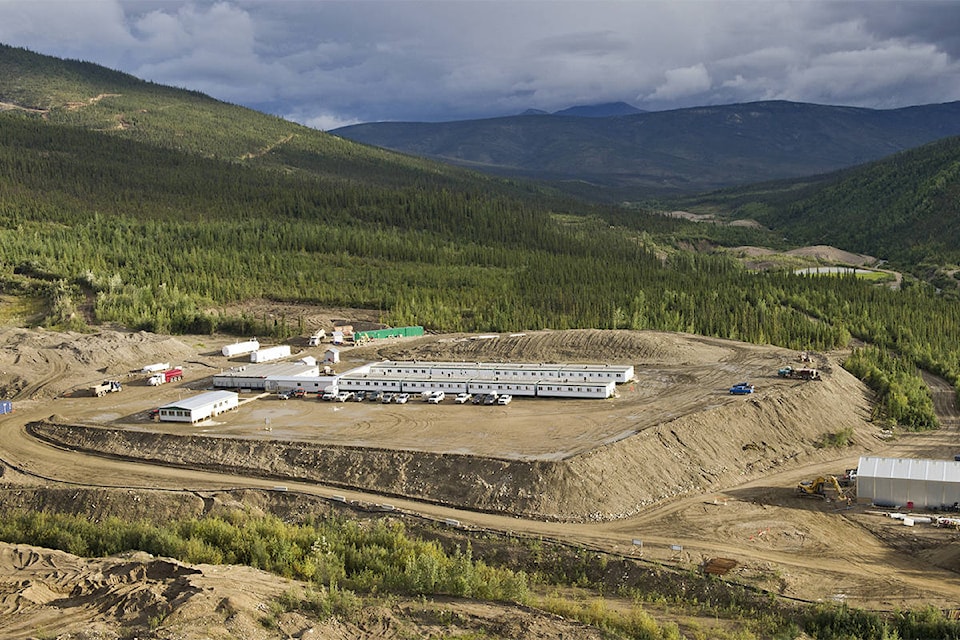Increased mining development on the horizon has the Conference Board of Canada predicting growth for the Yukon’s economy.
The board’s annual forecast, released this morning, is predicting the Yukon’s real GDP will grow by an average of 6.9 per cent annually over 2018–25.
“Mineral production will peak in the last half of the 2020s and real GDP growth is expected to taper off over the remaining 15 years of the forecast,” the report says.
Currently Minto mine is the only producing mine in the territory, said Marie-Christine Bernard, director of the provincial and territorial forecast service.
“But conditions are looking better now, commodity prices have been increasing over the last year and just general conditions for the mining sector have improved,” she said.
Mining output will grow at an average annual rate of 17 per cent over 2018–25, the report says.
The conference board’s predictions are based in part on the assumption that three new mines will be coming to the territory — Victoria Gold’s Eagle mine, the Coffee mine and the large Casino mine project.
While construction has begun on the Eagle mine and production is expected to start next year, both Coffee and Casino have yet to get complete regulatory approval.
The Coffee project is currently working its way through the Yukon Environmental and Socio-economic Assessment Board approvals process.
Casino on the other hand is further away. The mine, if it is approved, will be the largest mine in the history of Yukon, the report says.
Casino Mining Corporation has previously said it hopes to have its proposal resubmitted to the assessment board by the end of 2018.
The project will be facing a panel review, the highest level of environmental assessment in the Yukon.
The conference board says it based its forecast on the assumption that the mine’s four-year construction period will begin in the early 2020s, with first gold midway through the decade. “Once in operation, almost 900 people will be employed at the mine for a total of 22 years,” the report says.
The board hasn’t always included Casino in its projections, Bernard said.
“It looked in our opinion it’s likely it will go ahead. But it’s a volatile industry as well so I would say there is some kind of caution with this.”
Without Casino the forecast for the early 2020s would look different, she said.
“In the 2020s we would see growth a lot weaker in the Yukon. That’s mainly the project that’s pulling up growth in the next decade.”
Bernard said she couldn’t speak to how much of the positive outlook for mining was caused by government intervention versus changes in the international market. “But I think it’s mostly dependant on conditions outside of Canada’s control or the Yukon’s control in this sense.”
The report acknowledges that many of the jobs created by these new mines will go to fly-in/fly-out workers.
“I think it’s still positive because all of the investment still occurs in the territory. Obviously not all the jobs are filled by residents so that’s where the territory might lose out a little bit,” Bernard said.
Yukon’s unemployment rate will remain at around 4 per cent for the next few years before it begins rising after mining output peaks in 2026, the report says.
“It will take more than 1,500 workers to operate the Casino, Coffee, and Eagle mines when they all are in commercial production.”
According to the forecast, the Yukon population will age more rapidly than in the other two territories, and that will put more pressure on government spending.
“Health care accounted for 31.2 per cent of territorial spending in 2016-17. Over the forecast, it will grow faster than any other segment of Yukon’s budget, eating up 44 per cent of the territorial government’s budget by 2040.”
The board says its revenue estimates beyond 2019 are more positive than those of the Yukon government because it included the assumption that Casino mine would begin construction in the early 2020s.
“All told, the revenue gains will not be enough to avoid deficits in the final 10 years of the forecast. Rising dependency ratios will leave a smaller cohort of working-aged people to support a growing number of older Yukoners requiring more health care services,” the report says.
“Strong revenue growth over the next 10 years will prevent deficits in most of the 2020s, but expenditures will catch up with revenues by 2028-29 and the deficit will balloon in the years that follow. “
The conference board says keeping the Yukon’s budget in the black is “already a tall order for the Yukon government.”
“The rising costs of delivering health care, education, and social programs forced the territory into deficit in 2016–17. With little room to manoeuvre, it will be difficult for the government to maintain a balanced budget in the face of even minor shocks to the economy,” the report says.
Contact Ashley Joannou at ashleyj@yukon-news.com
